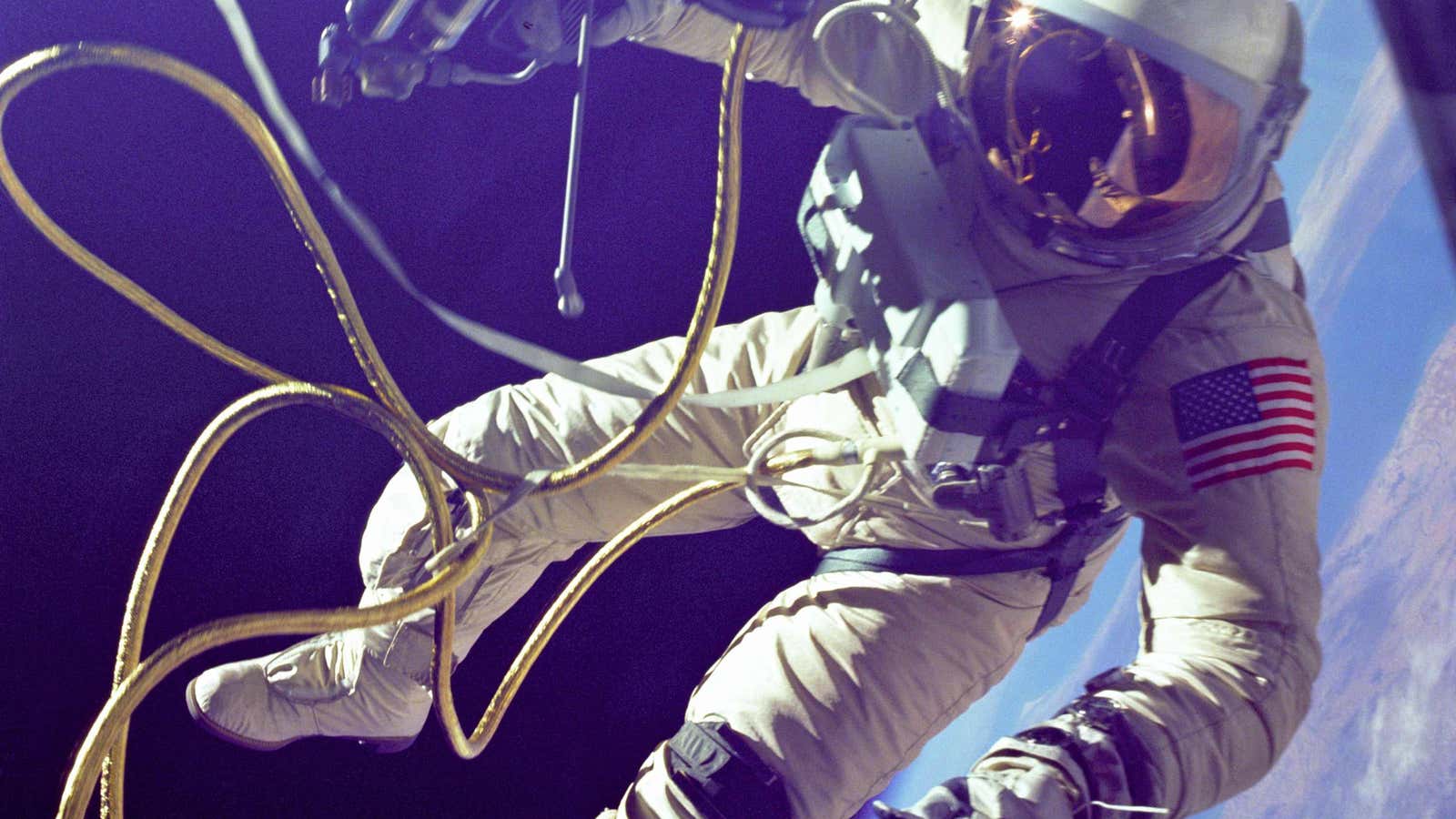This question originally appeared on Quora: I watched a space walk today. If the space craft needs to orbit at 17000 mph, how come there seems to be no effect on the astronauts? Answer by Robert Frost, instructor and flight controller at NASA.
Imagine you are on a passenger airplane, say a Boeing 777 that is traveling at 640 mph. You have no difficulty getting out of your seat to go to the restroom. You have no difficulty pouring your ginger ale from the can into the plastic cup, even though the airplane is moving at an incredible speed. This is because you, your seat, the restroom, the can of ginger ale and the plastic cup are all traveling at 640 mph, too.
Ah, but you say, I’m inside the airplane! It wouldn’t be so easy outside. True. And what is the reason for that? Why would you be thrown off of the wing if you tried to walk out onto it? The wind. The airplane (and you) are traveling at 640 mph and the wind is not.
In space, there is negligible wind. An astronaut can climb out of the airlock and along the truss and feel no wind. They are experiencing the same forces outside the space station as they were inside the space station. If they can float around happily inside the vehicle that is moving at 17500 mph, they can float around happily outside the vehicle that is moving at 17500 mph.
It’s all about forces. If you expect a body to be affected in some way, you have to identify the force that would impart that effect. As Sir Isaac Newton told us, a body in motion remains in motion unless acted upon by an unbalanced force.
You can follow Quora on Twitter, Facebook, and Google+.
More from Quora:
Why can I jump in the airplane cabin without flying to the back of the plane?
How many people have actually gone to space?
In which region of atmosphere satellites orbit around earth?
